“You can see it from every vantage point in Chiang Mai city. The sun sets somewhere beyond its ruffle of peaks to the west, it leaks dozens of waterfalls and streams which gurgle down to the thirsty valley below and the people of Lanna look towards the glittering golden pagoda, which appears to be at its summit, as one of the most sacred sights in the north of Thailand. Doi Suthep-Pui National Park has often been likened to a blessed green lung, pumping and breathing its oxygen onto the polluted concrete jungle of Chiang Mai city below. The mountain gives.”
So began my cover story, ‘Doi Suthep in Crisis’ in our August 2006 issue of Citylife. Over a course of three months, I’d interviewed over a dozen people on the ‘health’ of Doi Suthep; from the permanent secretary of the Ministry of Natural Resources and Environment, the infamous Plodprasop Suraswadi, to the abbot of Wat Phra That Doi Suthep as well as a number of botanists and entomologists. My conclusion was grim; water resources were diminishing, encroachment on national park land was rife, overpopulation had resulted in lack of waste management, wild plants and animals were disappearing, and the mountain was getting ‘sick’. A botanist from Chiang Mai University told us that only about 25% of the park remained somewhat close to its original condition, explaining that the rest was, at best secondary growth, and at worst developed.
Coming across that old issue recently, I thought that it was time to revisit this topic and I shall be borrowing liberally from the past to ease the step into the present so that perhaps we can navigate a path towards a healthy future.
Pieces of the Suthep-Pui Pie
Until recently, Doi Suthep-Pui National Park covered 160,000 rai of land (approx. 261 square kilometres). On August 27th of this year HM King Vajiralongkorn put his name on a document to remove 2,400 rai from the park, signing them over to nine government bodies such as the Royal Flora (836 rai) and the Night Safari (809 rai). To be fair, these areas were sliced out years ago, but have only just now become officially removed from the park. Sadly, another 2,500 rai is currently going through the lengthy process of being cleaved from the park; this time Chiang Mai University will be receiving 1,500 rai for their Faculty of Agriculture near Mae Hia, Queen Sirikit Botanical Gardens will also no longer overlap with park land and certain temples and research units will also be staking their claims.
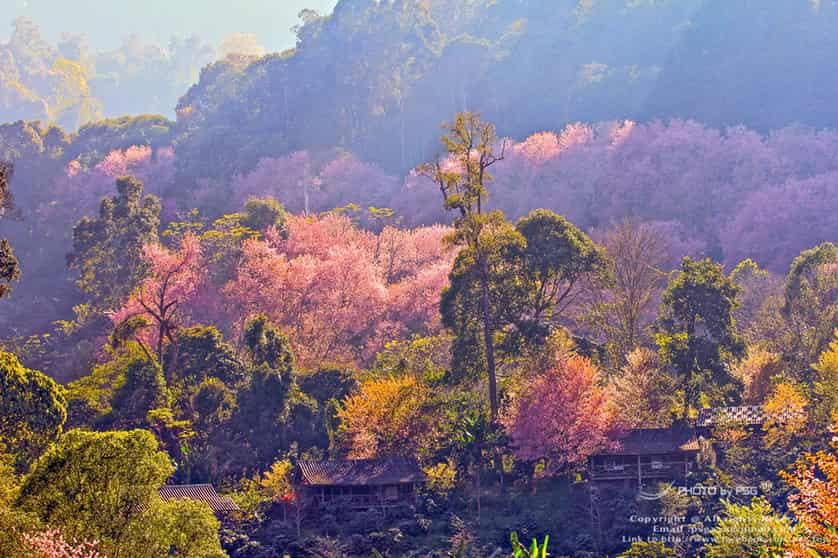
“The whole point of a national park system is that countries decide what minimum area of wildlife habitats must be protected, in perpetuity, to conserve the nine million or so species with which we humans share this planet,” says Dr. Stephen Elliott, Co-founder and Research Director of Chiang Mai University’s Forest Restoration Research Unit (FORRU-CMU). “You can’t just decide to carve out big chunks of a protected area system, with total disregard for the idea of permanence. Once species are extinct, they cannot be brought back. We can’t keep redrawing park boundaries at the transient whims of businessmen and politicians, or none of our protected areas will remain large enough to support viable wildlife populations. If we cannot save even the minimum areas that are needed for wildlife conservation in national parks and wildlife sanctuaries, we are effectively admitting that 3.5 billion years of evolution is disposable.”
Today, dozens of organisations lay claim to parcels of the park, some with absolutely no legitimate reason for being there while others enjoy rightful claims such as Phuping Palace, built in 1961, and Phra That Doi Suthep, as well as many other temples, most of which were there long before the National Park was established in 1981. Some private residences such as those belonging to the Nimmanhaeminda family also predate the park’s establishment, as do the Chiang Mai Rice Seed Centre, the Royal Thai Navy Seismic Research Centre and the Substation Channel.
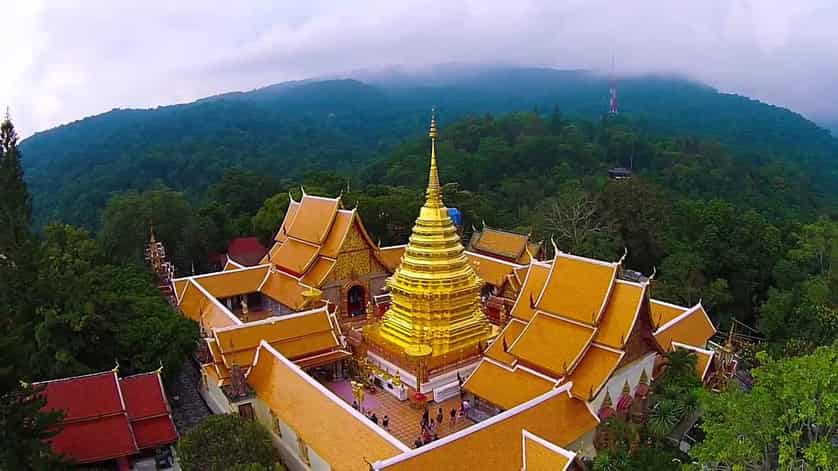
“The use of land in projects such as the Royal Flora, The Night Safari and the Botanical Gardens go against the National Park Management Policy,” explained Kritsayam Kongsatree, Superintendent of the Doi Suthep-Pui National Park, “so it is best they are removed from the park altogether.”
“It was exactly forty years ago that 358,000 rai of land, which partially overlaps and extends beyond the park’s boundaries, was accepted by UNESCO as one of three Man and the Biosphere Reserves in Thailand,” explained Kritsayam of the intergovernmental scientific programme which has been working for four decades to establish a scientific basis for the improvement of relationships between people and their environments. “This shows that the UN recognised the significance of this area. However, by Thai law, the area was considered a protected area until the park was officially gazetted. Because many people, both hill tribes and lowland villagers, had been living on what suddenly became a national park, a law was passed in 1998 to allow them to continue to live there until it could be proven one way or another whether they had any legitimacy — most are not able to be proven, so there they remain not legal, yet not illegal. Today our problems with encroachment are mainly with people who arrived post-1998. We are prosecuting two people this year, discovered through the use of satellite image, though we are surprised that there are not more. I know that when you drive around and see all the development along the Samoeng Loop you may wonder how that is possible as there is so much construction going on. But most of them are either outside park boundaries, or are on land which was lived on pre-1998.”
It seems that the very government whose job it is to protect the land from the unscrupulous, is itself the single biggest human threat to the land itself.
Stampeding Elephants No More
“One of the four women who founded Chiang Mai University’s Department of Biology once told me an incredible story,” said Elliott. “It was 1963 and what is today’s chemistry building of CMU was under construction. It was to be one of the first buildings of the new university, which would officially open the following year. It was the rainy season and Huay Kaew Road was a mud track. One day, a herd of wild elephants came down from the mountain and rampaged around what was to become CMU campus. Apparently the university founders actually suspended construction temporally, whilst they debated whether they might have situated the campus too far out from the city for students’ safety. For most of the 20th century, Doi Suthep-Pui retained much wildlife, including sambar deer, bears, and banteng, but hunting in the ‘60s to ‘80s wiped them out. Wild pigs, and barking deer are probably the largest mammals that survived in reasonable numbers on the mountain today.”
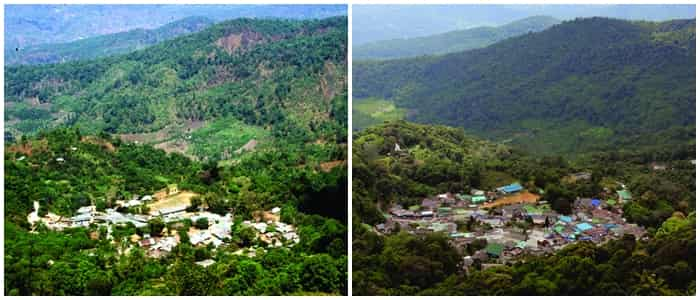
Eleven years ago Hans Banzinger of CMU’s Faculty of Agriculture told Citylife, “You will be surprised at the number of wildlife still present. Lots of small mammals remain, and if you’re lucky you can see flying squirrels gliding through a moonlit night, hear barking deer at dusk, glimpse an occasional wild boar or leopard cat deep in the jungle and, if you are really lucky, catch sight of the one monkey family remaining.”
Elliott and his students concur. Having set camera traps in various locations across the mountain, they report a surprisingly healthy number of mammals caught in action, including leopard cats, hog badgers and large civet. “One of my students recently snapped an Asiatic jackal with a camera trap near Mon Jam. I was astonished, because we had never heard of them being in the area before and the species is rare in the north. The species is nocturnal and must have survived simply because it doesn’t advertise its presence. The large Indian civet is also common up there and does great work, dispersing tree seeds over long distances every night. Only two years after we had planted trees, we saw a hog badger with two cubs. Unfortunately even though I’ve worked on Doi Suthep for more than 30 years I’ve never had a good view of the monkeys; just caught a glimpse of a tail disappearing through the forest canopies once, but several of my colleagues have seen them.”
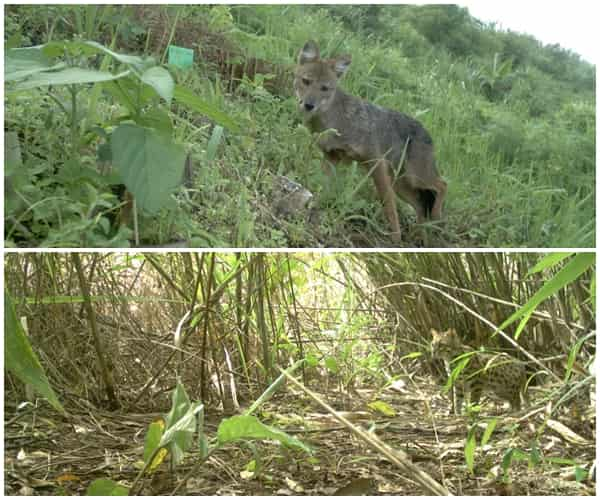
“In addition to mammals, the park also contains more orchid, bird and butterfly species than Khao Yai National Park, which is eight times bigger. Studies show that the lower slopes of the mountain support a greater diversity of tree species than most other seasonally dry tropical forests around the world, even rivalling the diversity of rain forests. The national park is also home to over 350 species of birds. To put this number into perspective, the entire continent of Europe has 700 species…One fourth of Thailand’s 1,000 orchid species can be found here, fifty of which the International Union for the Conservation of Nature has declared to be endangered. This park has also seen an incredible number of species discovered here, with over 320 new plants and 200 new animals having been discovered to date.”
The good news is that the above paragraph, written in 2006, can be copied and pasted verbatim as the status has remained pretty stable. In fact, we also excitedly reported all those years ago that a rare Mrs. Hume’s pheasant had recently been spotted, following a three decade hiatus. According to Kritsayam, they are now regularly seen by the many birdwatchers who visit the mountains.
Nature Reclaimed
“I really think that forest cover in the middle of the park is higher today than when I first arrived 30 years ago,” said Elliott who recently gave a talk at the 3rd Annual Doi Suthep Symposium on this very topic. His comparative slides that spanned decades showed obvious forest recovery in five prominent locations in the park where there was once degraded land.
“The park is unfortunate in many ways in that it stands so close to a city and its land is therefore more valuable and coveted than those in other national parks,” added Kritsayam. “The flip side of this is that there are many eyes watching it and this, including modern social media, has been very important in helping to protecting it.”
“It was all really kick started by the ‘Plant a Big Forest for Our King’ project in the ‘90s to celebrate HM King Bhumibol’s Golden Jubilee in 1996,” explained Elliott. “This had a great impact on Doi Suthep. Suddenly companies like PTT got into tree planting in a big way and it galvanised social and corporate responsibility programmes in big companies, producing noticeable results. Another big push came after the catastrophic floods in 2011, when all eyes turned to the northern watershed areas and how to protect them.”

“It was in this environment that FORRU-CMU first began its work,” continued Elliott. “We looked at how to bring forests back more effectively and boost biodiversity. Some forest regeneration may have happened naturally, had the forest been left alone, but we used science to accelerate the process. The framework species method we’ve developed, depends on planting trees that attract seed-dispersing animals into the restored plots. One of my former students counted 72 species of incoming tree species in plots that had been planted with only 29 tree species just 8-9 years after planting. We are there with the right species and the right fertiliser and weeding regimes at the right time to speed things up.”
“Two of my PhD students recently showed that most components from the carbon cycle returned to levels typical of natural forest within about 25 years after restoration is initiated,” added Elliott. This means that forest restoration can make a major contribution towards mitigating climate change. The trees suck carbon dioxide from out of the atmosphere much faster than we thought was possible and store it as solid carbon in wood and soil organic matter.
Even Citylife jumped on the carbon bandwagon in 2008, sponsoring the restoration of 3.25 rai of forest near Baan Mae Sa Mai, to offset our carbon footprint of about 65 tonnes (2007-2008). From data collected from the two PhD ladies, the plot now stores an estimated 113 tonnes of carbon (84 in the soil and 29 in the trees), up from about 13 tonnes when the project started. So we supported net removal of about 100 tonnes of carbon from the atmosphere over nine years, almost double our original target.
“We have proven that we can transform landscapes, especially if we do it bit by bit over a long period of time,” said Elliott.
Pesky People
A handful of large communities: Ban Doi Suthep, Ban Hmong Doi Pui, Ban Khun Chang Kian inside the park existed long before the park was established and several smaller communities have sprung up more recently. Then there are the 66 villages along the park borders. In all we are talking tens of thousands of people who use water from wells, streams and waterfalls, whose garbage and waste water must be managed and whose expansions curtailed. And that’s not counting the three million annual visitors to the park (it was 1.9 million in 2006) and all the traffic and waste that goes with that.
Interestingly, both Kritsayam and Elliott agree that the boundaries of the larger villages have been remarkably stable since the ‘90s. Whilst village populations have undoubtedly increased, village boundaries have not generally expanded into surrounding forest. In fact, the ‘carrot’ of improved economic opportunities, perhaps combined with the ‘stick’ of legal threat of regulation may have created the conditions under which former fields have been returned to forest.
In 2006 Phra That Doi Suthep temple was caught red handed, as they dumped their garbage into the forest near the mountain — an image of saffron robes piled atop old urinals and rotting food was published in national media. At the time, village heads also admitted that there was no waste water treatment, which meant that the waterfalls descending the mountain were filled with raw human sewage.
Phra That Doi Suthep Temple now has their garbage collected daily by the Suthep Municipality, and apparently a budget for a 10 million baht water treatment facility is about to be passed.
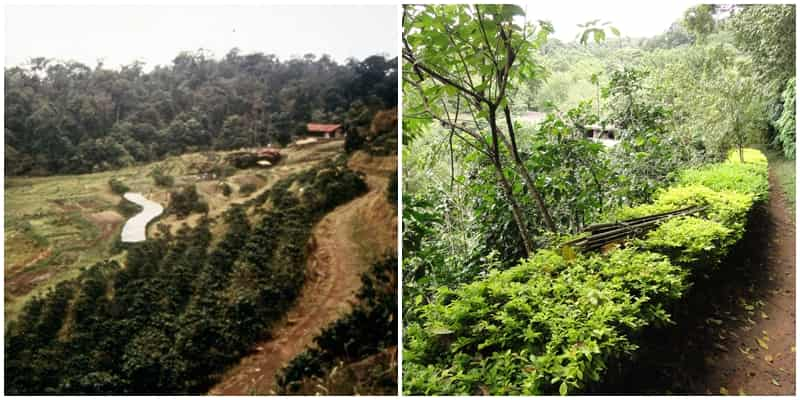
There has also been talk of cable cars up Doi Suthep since 1965, with the latest proposal coming out of the municipality just last year. “I am not worried so much about the impact of construction — after all, the pylons would have a fairly small footprint compared with a road, for example. I am far more worried about what would happen when cable cars deliver thousands of tourist to the village every day. The demand for more restaurants, toilets, accommodation and amusements like zip lines will be immense. This will put intense pressure on the park authorities to remove most of the area around the village from the park. All the forest that has recovered around the village over the past 20 years would be wiped out. Also…are we really contemplating dangling tourists in hot metal boxes above highly combustible forest in the dry season and swishing them through the smoke on wires? What could possibly go wrong,” asked Elliott.
“We are asking for a budget for a machine to monitor the carbon emissions of vehicles going up the mountain,” continued Kritsayam. “Then we can all consider our options, whether it is a tram or a cable car.”
People are not necessarily all bad for the environment, however, as has been proven by the incredible support FORRU-CMU has had from many communities over the years. “We don’t force anyone to do anything, but we work with villagers who then choose what parcels of land to be reforested. We have some budget for this, so that is an incentive, and in some areas they are discovering financial benefits of reforestation,” said Elliott.
Burning 
” The overall health of Doi Suthep-Pui can’t be concluded in such a short summary. I have left out entire arenas of information which should also be considered, due to lack of space. Factors such as the levels of natural water resources, the pros and cons of check-dams, corruption, social impact and a plethora of other considerations have to be taken into account in order to diagnose the status of our park. But what I can say is that an incredible amount of work has been done and progress made in the past decade and many parts of the mountains have been brought back to life. But none of that will mean anything if the government keeps slicing slithers and chunks out of the park…or if during the next dry years a cigarette butt sparks a fire that gobbles up all that tinder that is just waiting to be lit.
Related Article: Doi Suthep in Crisis
